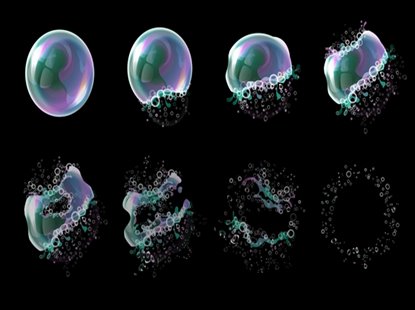Defoamers: Essential Tools for Enhancing Efficiency in Cleaning Products
Defoamers: Essential Tools for Enhancing Efficiency in Cleaning Products
Blog Article
The Role of Defoamers in Enhancing Product Quality and Performance
Defoamers serve as essential additives that reduce this problem, ensuring smoother manufacturing operations while enhancing the functional and aesthetic qualities of the last products. The choice of the suitable defoamer can be crucial to attaining ideal outcomes, raising vital questions concerning formulation compatibility and performance metrics that warrant further exploration.
Recognizing Defoamers
Understanding the duty of defoamers is important for keeping item quality across numerous industries. Defoamers are chemical additives created to reduce and stop the development of foam in fluid systems, which can detrimentally affect processes such as blending, filling, and surface stress. Lathering can cause inefficiencies, product problems, and jeopardized aesthetic allure, making defoamers a crucial element in producing operations.
In industrial applications, defoamers help to boost item uniformity and stability. The reliable use of defoamers not only ensures smoother manufacturing processes but also adds to premium product efficiency.
Additionally, the choice and formulation of a defoamer have to line up with specific application needs, such as compatibility with other ingredients, performance under varying temperature level and pH problems, and potential regulative restrictions. Eventually, understanding defoamers' features and their importance in different formulations is crucial for enhancing production and guaranteeing the best end products.
Kinds of Defoamers
Defoamers can be classified into numerous types based on their structure and device of action. The key types include silicone-based, non-silicone organic, and not natural defoamers.
Silicone-based defoamers are among one of the most effective, mostly as a result of their ability to spread promptly on the liquid surface area and interfere with foam formation. Their distinct chemical structure enables exceptional security, making them appropriate for high-temperature applications and settings with differing pH levels.
Non-silicone natural defoamers, typically composed of fatty acids or all-natural oils, are valued for their biodegradability and reduced poisoning. These are generally utilized in food and beverage applications where security and ecological influence are paramount.
Inorganic defoamers, that include substances like talc or calcium carbonate, act by enhancing the density of the liquid, consequently minimizing foam security. They are usually made use of in commercial procedures where compatibility with various other products is not a worry.
Each kind of defoamer has distinctive benefits and restrictions, enabling tailored services depending upon the particular foaming issues experienced in various applications. Understanding these distinctions is crucial for optimizing efficiency and attaining preferred item high quality.
Applications Across Industries
Numerous industries utilize defoamers to boost item high quality and operational performance. In the food and beverage sector, defoamers are crucial in procedures such as brewing and milk manufacturing to avoid foam development, which can cause inefficiencies and item variance. By controlling foam, suppliers can make sure better return and a much more uniform item.
In the pharmaceutical industry, defoamers play an essential duty in the formulation of fluid drugs, where excessive foam can impede mixing and exact dosing. Their usage helps keep the integrity of the solutions and helps with smoother manufacturing processes.
The paint and finishings industry likewise counts on defoamers to enhance the efficiency of products during application. By decreasing foam, these additives make sure a smoother finish and improve the visual qualities of the end product.

Benefits of Making Use Of Defoamers
While the application of defoamers differs throughout markets, their advantages constantly enhance item quality and procedure efficiency. One considerable advantage is the reduction of foam development during making procedures, which can otherwise lead to manufacturing delays and incongruities in product high quality. By minimizing foam, defoamers make it possible for a smoother flow of materials, helping with extra effective procedures and reducing the probability of equipment malfunctions.
Furthermore, making use of defoamers can enhance the look and appearance of end products. In sectors such as finishes, paints, and food handling, extreme foam can jeopardize the visual aesthetic appeals and total quality, while the suitable defoamer application makes sure a consistent finish and desirable attributes. Defoamers can add to cost savings by reducing waste during production and enhancing the use of raw materials.

Selecting the Right Defoamer
Choosing the ideal defoamer is crucial for enhancing production procedures and ensuring product high quality. The option of defoamer affects not just the performance of foam control yet additionally the total efficiency characteristics of the end product. Aspects to take into consideration consist of the kind of application, the chemistry of the solution, and the environmental conditions under which the product will be used.
Different markets may need particular defoamer types, such as silicone-based, organic, or polymeric defoamers. Comprehending the compatibility of the defoamer with the main active ingredients is essential to avoid unfavorable reactions that might endanger item honesty. In addition, the defoamer's description effectiveness in various temperature levels and pH degrees have to be reviewed to ensure constant performance.
Evaluating the defoamer in small applications can offer beneficial insights right into its efficiency and suitability. Factor to consider of governing compliance, specifically in food, pharmaceuticals, and cosmetics, is vital in picking a defoamer. Ultimately, a detailed evaluation of these factors will check this cause the option of a defoamer that not just controls foam successfully yet additionally enhances the high quality and performance of the last item.
Verdict

In conclusion, defoamers are crucial ingredients that substantially improve item top quality and performance throughout various sectors. The calculated selection and application of defoamers lead to set you back savings, maximized resource usage, and enhanced customer fulfillment.
Foaming can lead to inadequacies, product defects, and endangered aesthetic appeal, making defoamers an important component in making operations.

Report this page